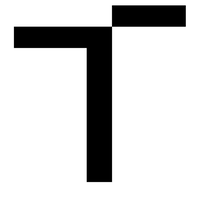Following the series of articles: What is tokenization? and Why tokenize shares?, let’s deep dive further on tokenized securities and how they can reshape the private capital markets landscape. Have a look at our glossary for the specific meaning of words.
Tokenized securities, how did it start?
Complementary to the well-established and regulated IPO (Initial Public Offering) process, crypto-currencies created new forms of fundraising (non-regulated for most of them) for private projects.
It started with the ICO (Initial Coin Offering), which Ethereum made popular during the 2017 speculative mania. An ICO buyer would exchange “X” quantity of Ethereum (ETH) against “Y” quantity of newly issued tokens (called an ERC-20 token). Yet, those tokens are not giving any ownership rights to their buyers, they are only utility tokens.
The ICO bubble was followed by the rise of IEO / IDO (Initial Exchange Offering or Initial DEX – decentralized exchange – Offering) in 2019-2020 which consisted in having crypto-exchanges themselves curating and / or incubating new crypto companies and using their exchange to raise money. Yet, again, the problem remained the same: still no ownership right, only utility tokens for individual investors subscribing to the IEO. Over the last 4 years, we’ve seen different forms of fundraising for crypto projects, but always facing the same challenge: not providing any ownership rights for their investors. Hence the need for a change.
That’s how STOs (Security Token Offering) were born: a security token represents digitally a traditional security and its underlying right instead of being a basic utility token. A simplified way to look at STO would be: STO = ICO + local regulation. Yet, regulatory framework and legal assessment as a whole (which asset type? which country? etc…) were still very much unclear.
Switzerland at the forefront of global regulation
The Swiss DLT law [1] – Distributed Ledger Technology – that entered into force on February 1, 2021 marked a worldwide legal breakthrough. It clarified the legal regime for tokenized securities (not utility tokens) by recognising registered uncertificated securities (also known as ledger-based securities) in the Swiss Code of Obligations (art. 973d-i). In simple words, one can digitize its shares into tokens on a blockchain legally through a tokenization framework and process delivering the benefits we reviewed in our previous article: better liquidity, less intermediaries, frictionless transactions, more transparency etc…
CMTA to guide the tokenization framework
In Switzerland, this tokenization framework is defined since 2019 with the help of the Capital Markets and Technology Association (CMTA) which created the CMTA-20 smart contract framework. The CMTA-20 smart contract is an extension of the ERC-20 utility token (used for Ethereum ICO / IEO) enriched with new legal and regulatory requirements making it possible for Swiss corporations to tokenize their shares.
It starts with shares tokenization but what’s next?
In the same way we can now digitize and tokenize private companies shares, we could think of tokenizing debt or even art and collectibles in a very close future. For the latter, this is actually what is happening with the rise of NFT (non-fungible tokens, called ERC-721) but that will be for another article.

Founded in 2018 and based in Geneva, Taurus SA is a global-leader in enterprise-grade digital asset infrastructure. They obtained a FINMA license to operate the first independent and regulated marketplace for digital assets and tokenized securities Taurus Digital eXchange (TDX). Audacia Group’s shares being admitted for trading on TDX, the company became one of the first SMEs to digitize its shares on the blockchain.


